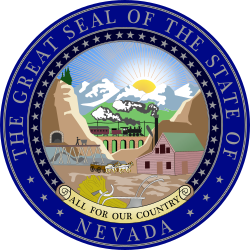| |||||||||||||||||
| |||||||||||||||||
 County results Malone: 50–60% 60–70% 70–80% Mechling: 50–60% 60–70% | |||||||||||||||||
| |||||||||||||||||
| Elections in Nevada |
|---|
 |
The 1952 United States Senate election in Nevada took place on November 4, 1952. Incumbent Republican U.S. Senator George W. Malone was re-elected to a second term in office. George Wilson Malone defeated Thomas B. Mechling by a very narrow margin despite George Wilson Malone's fellow Republican Dwight David Eisenhower winning the state over Adlai Stevenson II in a landslide in the concurrent presidential election in Nevada.

